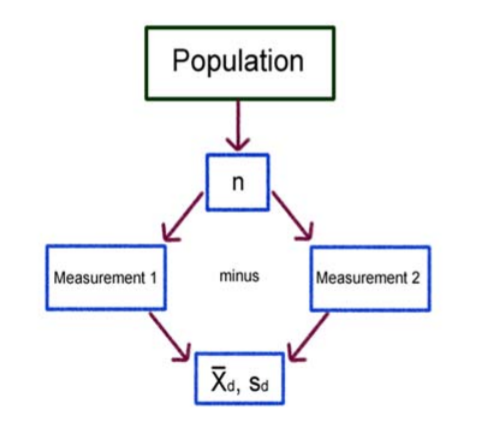11.1: Independent vs. Dependent Sampling
- Page ID
- 20913
In designing a two population test of means, first determine whether the experiment involves data that is collected by independent or dependent sampling.
Independent sampling
The data is collected by two simple random samples from separate and unrelated populations. This data will then be used to compare the two population means. This is typical of an experimental or treatment population versus a control population.

- \(n_1\) is the sample size from Population 1.
- \(n_2\) is the sample size from Population 2.
- \(\overline{X}_1\) is the sample mean from Population 1.
- \(\overline{X}_2\) is the sample mean from Population 2.
- \(s_1\) is the sample standard deviation from Population 1.
- \(s_2\) is the sample standard deviation from Population 2.
Example: Comparing algebra courses
A community college mathematics department wants to know if an experimental algebra course has higher success rates when compared to a traditional course. The mean grade points for 80 students in the experimental course (treatment) is compared to the mean grade points for 100 students in the traditional course (control).
Dependent sampling
The data consists of a single population and two measurements. A simple random sample is taken from the population and pairs of measurement are collected. This is also called related sampling or matched pair design. Dependent sampling actually reduces to a one population model of differences

- \(n\) is the sample size from the population, the number of pairs
- \(\overline{X}_d\) is the sample mean of the differences of each pair.
- \(s_d\) is the sample standard deviation of the differences of each pair.
Example: Comparing midterm grades
An instructor of a statistics course wants to know if student scores are different on the second midterm compared to the first exam. The first and second midterm scores for 35 students is taken and the mean difference in scores is determined.


